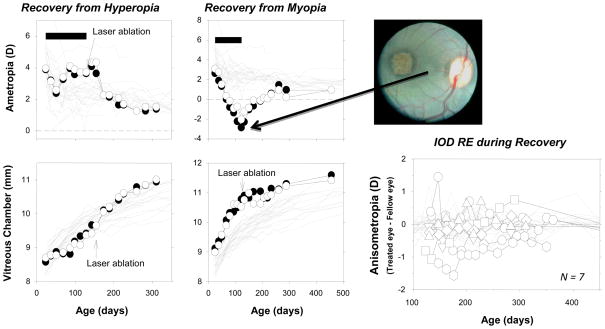Figure 6.
Effects of foveal ablations on recovery from experimentally induced refractive errors.92 Left. Spherical-equivalent, spectacle-plane refractive corrections (top) and mean vitreous chamber depths along the pupillary axis (bottom) are plotted as a function of age for the right eyes of individual control animals (thin gray lines) and the laser-treated (filled symbols) and non-lasered fellow eyes (open symbols) of two monkeys that wore binocular peripheral diffusers. The filled horizontal bars in the top plots indicate the lens-rearing periods. The laser photoablations were performed immediately after the lens-rearing period (top right). Right bottom. Interocular differences in refractive error plotted as a function of age for 7 monkeys with experimentally induced refractive errors that had the fovea of one eye ablated via laser photocoagulation at the end of the lens-rearing period. The first symbol for each animal represents the start of the recovery period. The thin gray lines represent data from the control monkeys.

